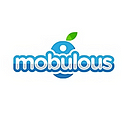How to Ensure Accessibility in Mobile App Development
In today’s digital landscape, ensuring accessibility in mobile app development is more crucial than ever. As we move towards a more inclusive digital world, developers must prioritize creating apps that are accessible to all users, including those with disabilities. This comprehensive guide will delve into the essential techniques and strategies to ensure your mobile apps meet accessibility standards and provide a seamless experience for every user.
Understanding Mobile App Accessibility
Accessibility in mobile app development refers to the design and development practices that make apps usable for people with disabilities. This includes users who may have visual impairments, hearing impairments, motor disabilities, or cognitive limitations. By integrating accessibility features, developers can enhance the usability of their apps, ensuring they are inclusive and functional for everyone.
Key Accessibility Standards and Guidelines
To create accessible mobile apps, it’s essential to adhere to established standards and guidelines. The following are critical frameworks and guidelines to consider:
- Web Content Accessibility Guidelines (WCAG): The WCAG provides a comprehensive set of recommendations for making web content more accessible. Although primarily for web content, many of these principles are applicable to mobile app development. Key principles include Perceivable, Operable, Understandable, and Robust (POUR).
- Section 508: This U.S. law requires federal agencies to make their electronic and information technology accessible to people with disabilities. While it primarily applies to government websites, its standards can guide mobile app accessibility.
- Americans with Disabilities Act (ADA): The ADA mandates accessibility in various public spaces, including digital spaces. Adhering to ADA guidelines ensures that your mobile app is compliant with legal standards.
Designing for Accessibility
1. Color Contrast and Visual Design
Ensuring sufficient color contrast is essential for users with visual impairments. Text should have a high contrast with its background to enhance readability. Utilize tools such as contrast checkers to verify that your color schemes meet the minimum contrast ratios recommended by WCAG.
2. Text Size and Scaling
Design your app with scalable text options to accommodate users with low vision. Allow users to adjust text size without affecting the app’s functionality or layout. Implement dynamic type features that adapt text size based on user preferences.
3. Alternative Text for Images
Provide alt text for all images and visual elements within your app. Alt text describes the content and function of images, making them accessible to users who rely on screen readers. Ensure that alt text is descriptive and relevant to the image’s context.
4. Accessible Navigation
Design intuitive and keyboard-friendly navigation for users who rely on assistive technologies. Ensure that all interactive elements are accessible via keyboard commands or screen readers. Implement clear and consistent navigation patterns to facilitate ease of use.
Implementing Accessibility Features
1. Screen Reader Compatibility
Ensure that your app is compatible with screen readers like VoiceOver (iOS) and TalkBack (Android). Test your app with these tools to verify that all content and interactive elements are properly announced and navigable.
2. Voice Commands and Gesture Controls
Incorporate voice commands and gesture controls to provide alternative input methods. These features assist users with motor impairments or those who prefer non-traditional input methods. Implement voice command functionality and ensure gestures are intuitive and responsive.
3. Customizable User Interfaces
Allow users to customize the user interface based on their preferences. This includes options to adjust text size, color schemes, and layout configurations. Customizability enhances the overall user experience and accessibility.
4. Error Handling and Feedback
Provide clear and accessible error messages and feedback. Ensure that error messages are descriptive and offer guidance on how to correct issues. Implement visual and auditory cues to assist users in understanding and resolving errors.
Testing for Accessibility
1. Manual Testing
Conduct manual testing to evaluate accessibility features. Test your app with various assistive technologies and involve users with disabilities in the testing process. Manual testing provides valuable insights into real-world usability and identifies potential issues.
2. Automated Testing Tools
Utilize automated testing tools to identify accessibility issues. Tools like Axe, Lighthouse, and WAVE can scan your app for common accessibility errors and provide recommendations for improvements. While automated tools are helpful, they should complement manual testing.
3. Continuous Improvement
Accessibility is an ongoing process. Regularly update and improve accessibility features based on user feedback and evolving standards. Stay informed about new accessibility guidelines and incorporate them into your app development practices.
Best Practices for Accessibility in Mobile App Development
- Prioritize Accessibility from the Start: Integrate accessibility considerations into the initial design and development stages. Address accessibility issues early to avoid costly revisions later.
- Stay Informed: Keep up-to-date with the latest accessibility standards and guidelines. Regularly review and update your app to ensure compliance with current best practices.
- Engage with Users: Seek feedback from users with disabilities to understand their needs and preferences. Incorporate their feedback into your app development process to enhance accessibility.
- Educate Your Team: Provide training and resources on accessibility best practices to your development team. Ensure that all team members are aware of accessibility requirements and their role in achieving them.
Conclusion
Ensuring accessibility in mobile app development is a crucial aspect of creating inclusive digital experiences. By adhering to established guidelines, implementing key accessibility features, and prioritizing continuous improvement, developers can build apps that are usable and enjoyable for all users. Embrace accessibility as an integral part of your app development process and contribute to a more inclusive digital world. Original Source
